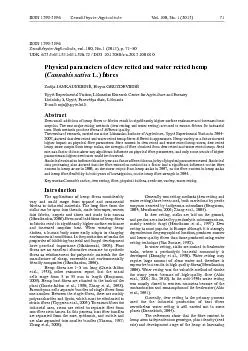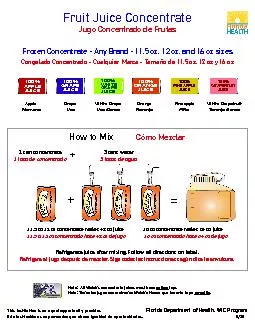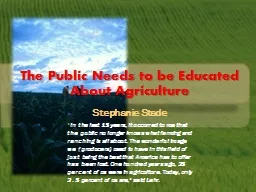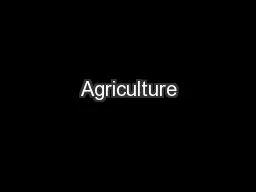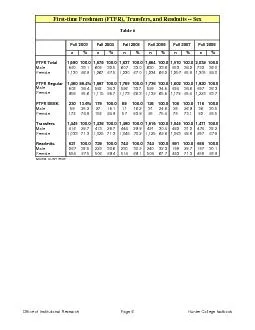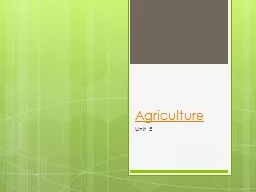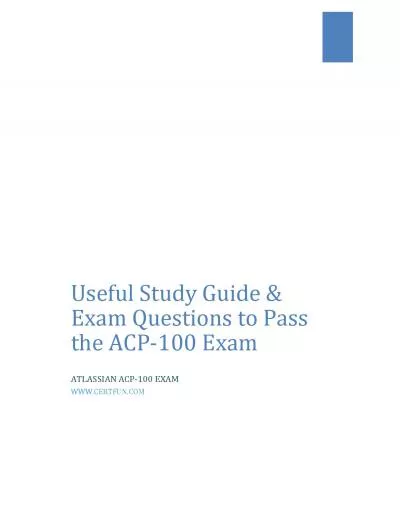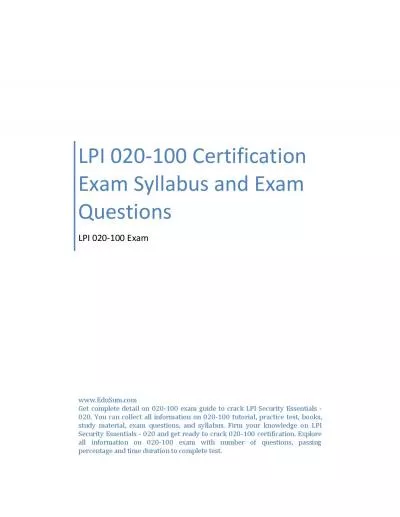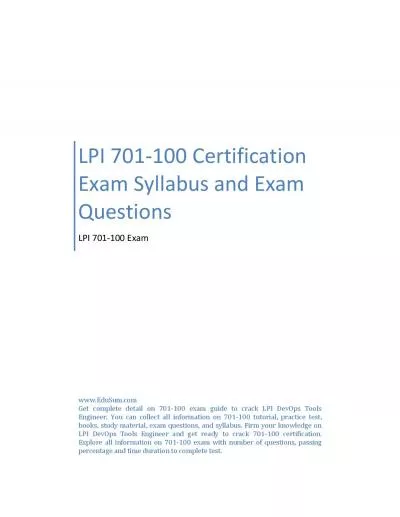PDF-Zemdirbyste-Agriculture Vol. 100, No. 1 (2013)
Author : marina-yarberry | Published Date : 2015-10-12
Physical parameters of dew retted and water retted hemp L x00660069bres Upytx0117 Experimental Station Lithuanian Research Centre for Agriculture and Forestry Linininkx0173
Presentation Embed Code
Download Presentation
Download Presentation The PPT/PDF document "Zemdirbyste-Agriculture Vol. ..." is the property of its rightful owner. Permission is granted to download and print the materials on this website for personal, non-commercial use only, and to display it on your personal computer provided you do not modify the materials and that you retain all copyright notices contained in the materials. By downloading content from our website, you accept the terms of this agreement.
Zemdirbyste-Agriculture Vol. 100, No. 1 (2013): Transcript
Download Rules Of Document
"Zemdirbyste-Agriculture Vol. 100, No. 1 (2013)"The content belongs to its owner. You may download and print it for personal use, without modification, and keep all copyright notices. By downloading, you agree to these terms.
Related Documents

